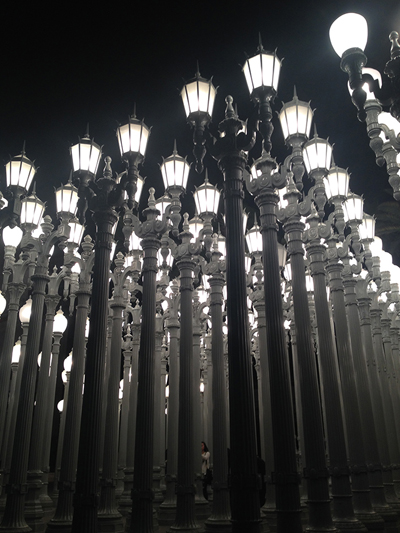Software Reading
Erkki Huhtamo discussed the issue about "hands-on", which is an emerging phenomenon called "interactive art". These works are exhibiting in public as installations and the visiters can actually interact with the pieces. The article reminds me an art work I saw in Los Angeles during vacation. "Urban Light" designed by Chris Burden really caught my attention when I was driving on Wilshire Boulevard. The installation consists of 202 restored street lamps from the 1920s and 1930s. It is really a great representation of "interactive art". I saw lots of people stopping by and taking pictures in it. Some photographers shoot their models among those street lamps and parents take their kids to hang out.

One of the readings I choose is Florian Cramer's "Concepts, Notations, Software, Art". The author addressed the idea that people in the arts and humanities have considered computers primarily as storage and display media, as something which transmits and reformats images, sound and typography. For example, the term "digital art'' has been associated primarily with digital images, music or audiovisual installations using digital technology. The author discussed the history of the digital and computer-aided arts could be told as a history of ignorance against programming and programmers by giving examples of software art. I found Tristan Tzara's generic instruction for writing Dada poems by shuffling the words of a newspaper article most interesting.
Another reading I chose is Marvin Minsky's excerpts from "The Society of Mind". The author starts the article by giving an example of a child playing with blocks. The author explained that the reason that we break things into small parts is because minds, like towers, are made that way- except that they're composed of processes instead of blocks. Though all grown-up persons know how to do such things, no one understands how we learn to do them because of the term "common sense". "Common sense is not a simple thing. Instead, it is an immense society of hard- earned practical ideas-of multitudes of life-learned rules and exceptions, dispositions and tendencies, balances and checks." I really like the question that the author brought up: are people machines? We need to adapt our attitudes to phenomena that work on scales never before conceived. The term "machine" no longer takes us far enough.